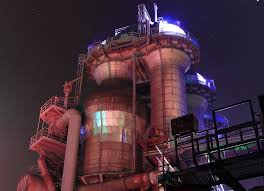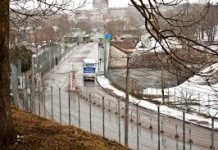
In the serene coastal town of Pärnu, Estonia, a small Baltic country is making a strategic move that could significantly influence the future of European defense. On April 25, 2025, the Estonian government unveiled plans to establish a state-owned company, Hexest AS, to build a factory for military explosives near Pärnu. The factory is expected to produce 600 tons of RDX explosives each year.
This high-energy explosive, essential for filling artillery shells, could generate enough material to produce as many as 100,000 155mm artillery rounds annually, a notable contribution to Europe’s munitions supply amidst ongoing conflicts and evolving geopolitical challenges. Estonia’s decision is part of its broader strategy to strengthen its own defense capabilities while supporting its European allies, particularly in the face of increasing calls for European defense self-sufficiency.
The initiative was spurred by a shift in U.S. policy under President Donald Trump, who has signaled a reduction in American military assistance to Europe and Ukraine compared to the Biden administration. Estonia’s efforts are not merely a reaction to current circumstances but also a proactive move toward ensuring Europe can maintain its defense independence.
RDX, or Research Department Explosive, is a stable, high-power explosive known for its rapid detonation. Developed during World War II, it has become a critical component of modern munitions due to its efficiency in delivering immense destructive force in a compact form. RDX is used as the primary explosive filler in 155mm artillery shells, the NATO-standard rounds utilized by howitzers such as the American M777, the French CAESAR, and the German PzH 2000. Depending on the shell’s design and purpose—whether high-explosive, extended-range, or precision-guided—each 155mm shell requires between 6 and 10 kilograms of RDX.
Estonia’s factory could produce between 60,000 and 100,000 shells annually, or roughly one million 81mm mortar shells, significantly contributing to Europe’s ammunition stockpile. Although this output alone may not fully meet the needs of Ukraine, where artillery units fire an estimated 60,000 to 200,000 155mm rounds per month, it represents a meaningful step toward closing the gap in European munitions production.
RDX’s technical importance lies in its high detonation velocity—around 8,750 meters per second—which makes it ideal for enhancing the destructive power of artillery shells. Its stability allows for safe storage and transportation, while its versatility makes it suitable for various military applications, from mortar rounds to missile warheads.
However, producing RDX is a complex and highly regulated process, involving the chemical synthesis of materials like nitric acid and hexamine. Historically, Europe has depended on limited domestic production and imports from countries such as China and India, creating vulnerabilities exposed by global supply chain disruptions and political tensions. Estonia’s decision to manufacture RDX using oil shale as a raw material is a direct response to this dependence. The factory, scheduled to open in 2028, will not only supply Estonian munitions manufacturers but also support European allies, strengthening the continent’s defense capabilities.
The 155mm artillery shell, the primary beneficiary of Estonia’s RDX production, is a crucial tool in modern warfare. These shells, weighing about 100 pounds and measuring roughly 23 inches in length, are fired from towed and self-propelled howitzers. Depending on the gun and charge, they can deliver explosive payloads over distances ranging from 15 to 25 miles. The M795 high-explosive round, used extensively by NATO forces, carries around 23 pounds of explosive filler, typically RDX-based, and can create a lethal radius of up to 150 feet upon impact. More advanced versions, such as the M982 Excalibur, integrate GPS guidance for improved accuracy while requiring similar quantities of RDX.
Estonia’s move comes amid significant shifts in European defense policy, accelerated by Russia’s invasion of Ukraine in February 2022. The conflict exposed Europe’s lack of readiness for prolonged high-intensity warfare, as decades of underinvestment in defense infrastructure left the continent struggling to replenish its munitions stockpiles. According to NATO estimates, Europe can now produce nearly two million 155mm shells annually, a notable increase from pre-war levels, but still insufficient to meet current demands.
Leading European manufacturers like Rheinmetall are ramping up production, with new factories in Germany, Hungary, and Lithuania expected to produce hundreds of thousands of shells by 2027. However, Estonia’s project stands out for its boldness and speed. Despite being a relatively small nation with just 1.3 million people, Estonia has consistently met NATO’s 2% defense spending target and has been a major contributor to military aid to Ukraine, donating over 1% of its GDP since 2022.
Estonia’s initiative is driven by geopolitical considerations, particularly the changing U.S. policy under President Trump. Trump’s calls for NATO members to increase defense spending, along with reduced military support for Ukraine, have spurred Europe to reassess its defense independence. In February 2025, Rheinmetall’s CEO, Armin Papperger, emphasized the urgency of increasing European combat stockpiles, noting that no European country currently meets NATO’s 30-day combat stockpile requirement.
Estonia’s factory is part of a broader trend, with smaller NATO members, particularly in the Baltics, taking decisive action to secure their own defense capabilities. Lithuania has partnered with Rheinmetall and Ukraine to build its own RDX factory, set to begin construction in 2025, while Poland has ramped up its ammunition production to support both its own forces and Ukraine.
The Pärnu factory also carries regional significance. Located just 120 miles from the Russian border, Pärnu is known for its beaches and resorts, not its industrial capacity. The decision to transform it into a center for explosives production underscores Estonia’s readiness to take risks in the face of Russian threats. While there has been no official Russian response to the announcement, the Kremlin’s history of hybrid warfare, including cyberattacks and sabotage, suggests that Estonia’s move will not go unnoticed.
Economically, the factory is expected to create hundreds of jobs and attract investment from European defense firms. The project, which is estimated to cost between €120 and €130 million, could transform Pärnu into a regional center for ammunition production, fostering competition within the EU. Whether Estonia will prioritize domestic production or export RDX to allies remains unclear, but the decision will likely have significant geopolitical implications.
Estonia’s proactive defense strategy is rooted in its history as a former Soviet republic. After regaining independence in 1991 and joining NATO in 2004, Estonia has focused on securing its sovereignty and resilience. The Pärnu factory is a continuation of this strategy, positioning Estonia as a model for smaller nations striving for greater defense autonomy. As Europe navigates its rearmament efforts, challenges remain, including securing raw materials and coordinating efforts across the EU. The European Commission’s push to reduce reliance on Russian fossil fuels adds complexity to energy-intensive industries like explosives manufacturing. Yet, Estonia’s move signals a critical turning point in European defense policy, highlighting the importance of self-reliance in an increasingly uncertain global landscape.




